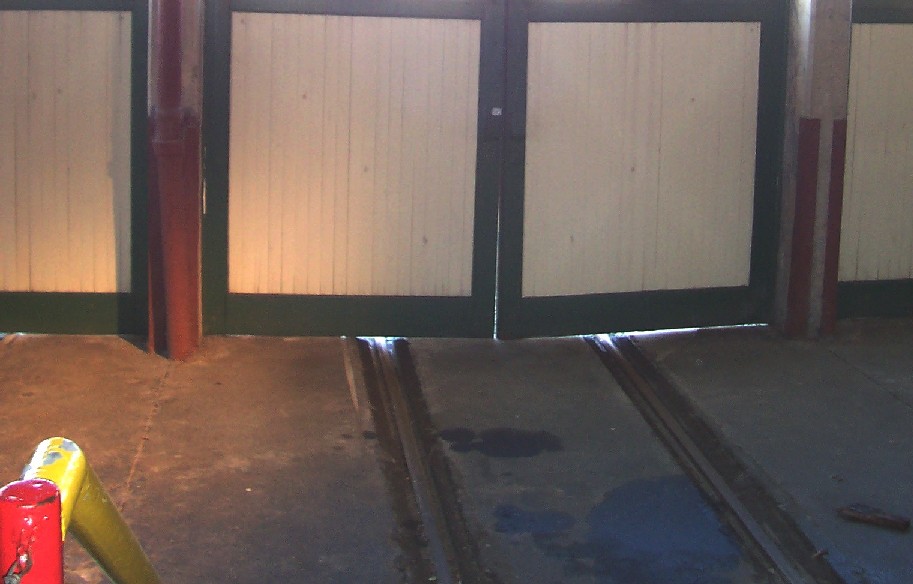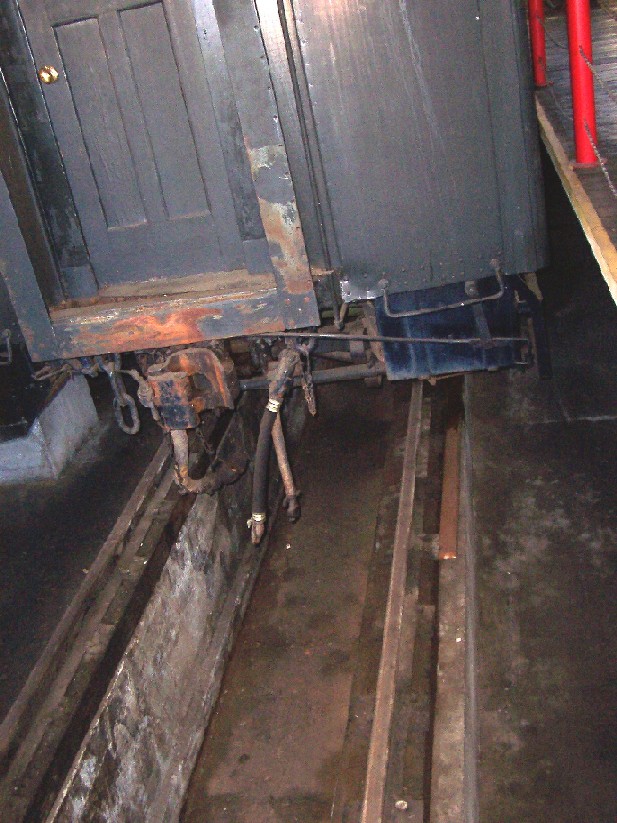Were the rails inside roundhouses and enginehouses set on ties or encased in the concrete floor? Incidentally, were the floors concrete?
The 3 or 4 I have been in had rail laid on the edges on concrete pits so men could get under the loco to work. I would not say every stall had a pit. The one that had a wood floor had wood laid between the rails like a grade crossing. Not sure what was under that wood. Since in general, ties are made to move, I would not think they would want that in a roundhouse.
Here’s a couple of shots of the brick roundhouse floor and track at the Savannah, GA Roundhouse Railroad Museum. The first shows track with an inspection pit:

And in the foreground of this one is one of the tracks that doesn’t have a pit:

In Janesville, WI, at the WSOR roundhouse (built 1905), there are two methods in use.
Some tracks have short pieces of ties embedded into the concrete that forms the pit. The rail is spiked to these ties.
Other tracks have the rail fastened to the concrete with special fasteners, similar to concrete tie clips. Not moving very fast in the roundhouse, so the fastener doesn’t need to be as beefy as one on the mainline.
I have been in roundhouses and enginehouses that had dirt, cinder, brick and/ or concrete floors. Some even had one or two types in different areas. I assume that could have been due to different ages for the sections. I would imagine most modern roundhouses would have used concrete floors for safety and durability.
The rails in most that I saw were set in concrete. I saw one roundhouse that had regular ties/rails laid into each stall. Some with ties/timbers for the inspection pits were just spiked to the wood members and had metal tie rods running across from rail-to-rail to maintain gauge. Since the engines were barely creeping I imagine the small tie rods maintained the gauge without any problems.
I’ve seen the inspection pits made from all the above materials too. Most of them were concrete but I saw a timber lined pit that had a dirt floor. After all the many years of grease and oil dripping into it it was rather solid and soaked and hard as a rock.
Roger
Funny that you should ask!
The family and I took a trip to the old Southern Railway Spencer Locomotive Shops at the NC Transporation Museum this past weekend (05/20/07).
Here are three images that I captured during the visit that should give you an idea of how the track was put down in the Robert Julian Roundhouse.
 Facing the doorway
Facing the doorway
 Viewing steps to the pit
Viewing steps to the pit
 Pit and passenger car
Pit and passenger car
Bruce:
Most Roundhouse stalls have cement floors with servicing pits - but since the foof covers everything, it’s not visible.
Servicing pits generally have rails mounted in concrete, but require holes cut for each track, to do. ‘Painted’ black stalls might suffice …
unless you were planning a plexiglass roof?